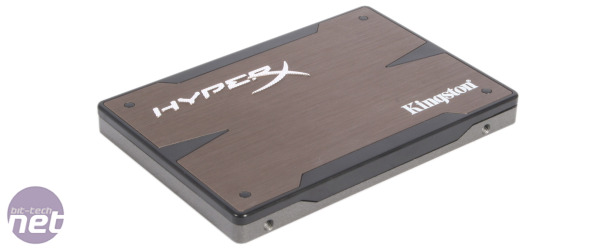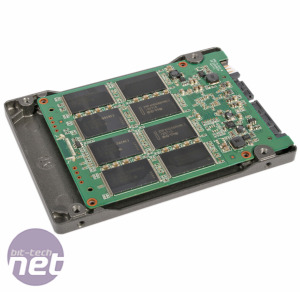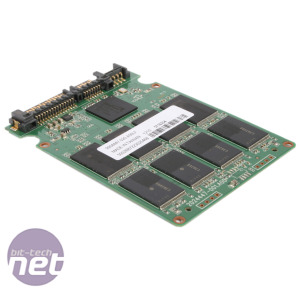Kingston HyperX 3K 120GB Review
Manufacturer: KingstonUK Price (as reviewed): £90.72 (inc VAT)
US Price(as reviewed): $129.99 (ex tax)
The SSD controller war is well and truly on: OCZ's Indilinx powered Everest platform is highly competitive, whilst Crucial and Samsung continue to impress with thier M4 and SSD 830 drives respectively. While these drives grab the headlines though, SandForce's SF-2281 controller remains popular with SSD partners and continues to appear in plenty of drives. The first Kingston drive to boast this controller was last year's HyperX, and now it's turned up in the cheaper HyperX 3K.
The main change this time around, though, doesn't concern the controller. Kingston's remit with the 3K was to bring a little of the HyperX's enthusiast-level performance to a cheaper price and, to achieve this, it's turned to cut-price NAND.
Savings have been achieved by choosing memory chips that are built to handle fewer program/erase cycles. These cycles are part of the natural degradation of any SSD, but the smaller the manufacturing process the fewer cycles an SSD will be able to handle: the 50nm NAND Intel used in its earlier SSDs was theoretically able to handle 10,000 cycles, for instance, but Intel's program/erase count dropped to around 5,000 when it switched to 34nm NAND. It’s part of the price paid for developing faster chips.
Click to enlarge
Most of the market's current drives, including the HyperX 3K, use 25nm MLC silicon, and those memory chips are typically rated to handle between 3,000 and 5,000 cycles. Kingston shoots for the low end of this scale in order to save some cash – and bring the price down for its customers.
That might sound like the HyperX 3K will be less reliable than rivals, but in reality the reduced number of cycles isn't a concern unless you plan on running the drive as part of a data centre. A hard-working SSD will run through one full program/erase cycle per day and, based on that estimate, the Kingston is safe for more than eight years – more than enough time for its performance to be superseded by far more advanced models.
The 120GB drive we’re reviewing comes with sixteen of Intel’s 8GB NAND modules on either side of the PCB, alongside the cache-free SF-2281 controller. The drive itself is a good-looking piece of kit: the majority of the drive is still plastered with a gunmetal grey finish, but it’s bordered by classy black rather than garish blue.
Kingston might have chosen less hard-wearing NAND chips for its drive, but the firm is obviously confident in maintaining the speed we saw on the original HyperX. Both the full-fat drive and this 3K version have a theoretical read speed of 555MB/s and a theoretical write pace of 510MB/s, although these are best case scenarios when handles easily compressed data.
Click to enlarge - The HyperX 3K pairs the SandForce 2281 drive controller with value Intel 25nm NAND
As with most SandForce drives, the HyperX 3K offers a lower formatted capacity than its competitors, despite a full complement of 18x8GB NAND modules. This is due to SandForce's higher spare area requirements, leaving the HyperX 3K with a formatted capacity of 112GB and a spare area of 14 per cent.
We’ve mentioned Kingston’s budget intentions several times so far, but not the actual figure. The 120GB HyperX 3K costs £95, but after the collapse of SSD pricing over the last few months, that’s no longer that impressive. OCZ’s excellent Vertex 4 128GB is the same price, while Samsung’s SSD 830 128GB is £15 cheaper and Crucial’s M4 128GB is also £10 cheaper. These drives also have the benefit of not relying on the compression technology at the heart of the SandForce 2281 drive controller and will perform at the same speed regardless of the type of data they handle.
As well as cutting costs when it comes to its NAND chips, Kingston has also cut back when it comes to its accessories. The original HyperX 240GB impressed with its bundle of extras: as well as the usual 2.5in to 3.5in bracket the firm include a SATA cable, external enclosure, USB to mini USB cable and even a small screwdriver to fit the drive into your PC. The HyperX 3K comes with no such luxuries at this price; there’s the 2.5in to 3.5in bracket and the relevant screws, but that’s it. You’ll have to shell out an extra ten pounds if you’d like the version with all of those goodies included.

MSI MPG Velox 100R Chassis Review
October 14 2021 | 15:04












Want to comment? Please log in.